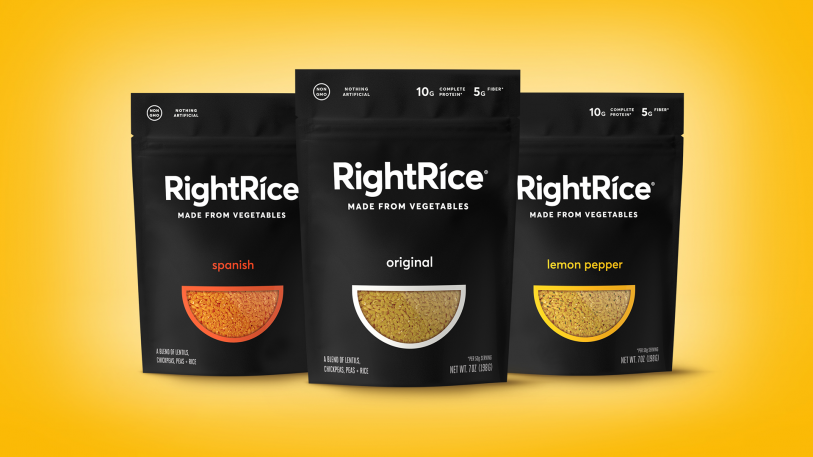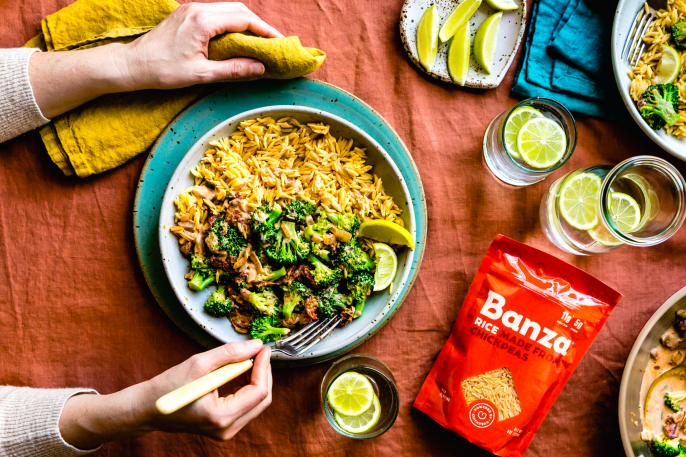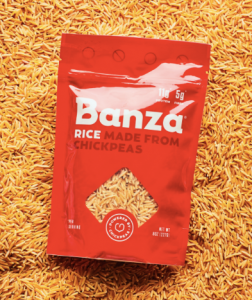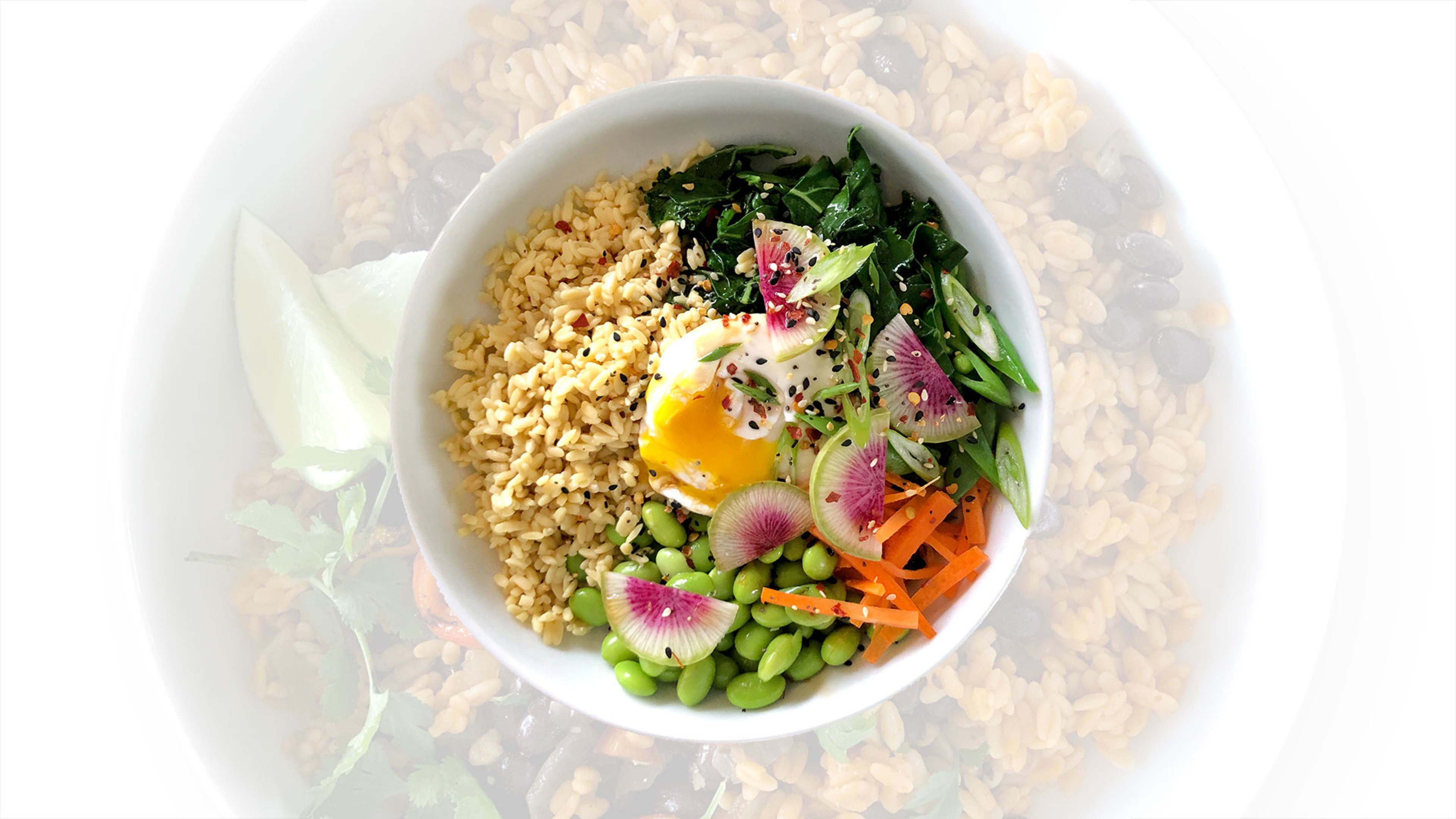Popchips founder Keith Belling is a self-admitted rice addict. The serial entrepreneur loves the white fluffy grain, craving it for lunch, dinner, and basically any chance he gets. Obviously he’s not alone: Rice feeds more than half of the world’s population, with more than 700 million tons produced each year.
But Belling, like an increasing number of Americans, didn’t appreciate what it did for his waistline.
“Over the past two years, I just noticed myself eating less and less rice, primarily because of the empty calories and the carbs,” explains Belling. “I wanted something more nutritious.”

Last week it closed $5.5 million in funding with a minority investment led by Strand Equity, along with participation by Impossible Foods COO David Lee, Allbirds cofounder Joey Zwillinger, Warby Parker cofounder Dave Gilboa and, interestingly, Kris Jenner, among other notable investors. RightRice is the first brand to launch in collaboration with both Whole Foods Market and Amazon.
“Everybody loves rice,” says Belling, “every demographic, every age group, every ethnicity. There’s really broad appeal.”

Up until a few years ago, little innovation existed in the category. Now, the alternative subsector sees small and big brands alike attempting to cater to the nation’s wellness concerns. Currently 88% of consumers say they are looking and willing to pay more for healthier foods.
Big Rice fights back
The most notable example is “cauliflower rice,” which uses the cruciferous veggie in the shape of rice. The substitute counts 25 calories and 5g of carbs per cup, versus 150 calories and 45g carbs for that of rice. It’s been adapted by several independent brands, like Cauli Rice, and numerous retailer brands like Whole Foods.
It became so popular that Trader Joe’s rationed bags in select cities, while the rice industry fought to get cauliflower companies to stop using the word “rice.” Last year, “cauliflower rice” jumped 60% jump in U.S. search queries, according to Google Trends.
Its success inspired a slew of startups to follow suit with their own clever substitutes. Best-selling legume pasta brand Banza recently introduced chickpea rice, which boasts three times the protein, double the fiber, and 30% fewer carbs than brown rice. The product rolled out at Whole Foods markets nationwide.

Rudolph notes that one third of Americans fail to abide by the U.S. Dietary Guidelines, which recommend consuming a variety of legumes. Beans, meanwhile, are heavily present in diets of Blue Zones, regions where people live much longer than average.

Last month, Seapoint Farms released the first-ever edamame-based rice alternative. The company, founded in 1996, heavily invested in healthy foods and snacks long before it was trendy. The brand dipped into the category following heavy retailer demand.
“The buying community out there was very excited by the innovation that was going on in the rice vegetable market,” says Seapoint Farms COO Philip Siegel.
Dubbed Riced, the newly launched product comes in two flavors: plain and “medley” (a mixture of edamame, cauliflower, and sweet potato). It can be found in supermarkets and health stores nationwide, as well as Amazon.com.
Keith Belling welcomes competition but notes the difference in hybrid products such as RightRice, which include flours and pea fiber to better resemble rice. Finely diced frozen vegetables, he says, cannot compare to the texture, taste, and flavor absorption of the original model. Consumers ultimately want what they’re accustomed to.
He puts it quite simply: “You’re not going to fool your kids into eating shredded vegetables.”
Perhaps, though the plant-based foods market continues to soar. A recent Nielsen report shows 39% of Americans actively try to eat more plant-based foods but no longer necessarily look to tofu, brown rice, and granola to fill that void. Traditional plant-based options were down 1.3% in 2018; instead, innovative plant-based alternatives, such as Beyond Meat’s faux-hamburgers, saw significant growth. Sales of plant-based foods grew 17% in 2018, totaling $3.7 billion.
“You’re going to see increased consumer interest and marketing efforts [in this sector],” predicts Siegel. The Seapoint Farm COO believes that even more big CPG brands will tap into the market in 2019. Bird’s Eye and Green Giant are two mega-brands that already released their own cauliflower rice to much success.
“This is something we feel is here to stay, it’s going to have traction,” he stresses. “We’re really still in the early stages of it.”
Recognize your brand’s excellence by applying to this year’s Brands That Matter Awards before the early-rate deadline, May 3.
